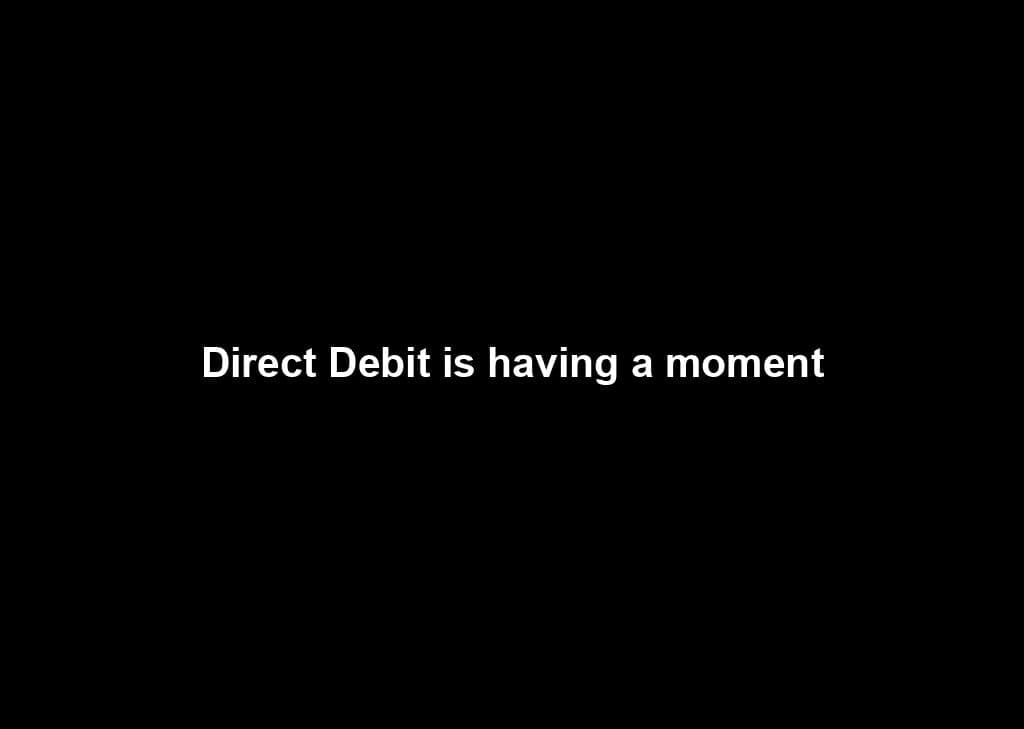Last week, when guest speaking on a webinar, I was posed with the question, “Direct Debit has been around for a while, but we’re seeing new uptake and new popularity. So, why is it making a comeback now?”
Let’s start with this – Direct Debit has been here for years, so I don’t call it a comeback. I would argue that Direct Debit has been consistent for years and in many markets, with many demographics and use cases, we’ve seen that there’s a preference for
paying with your bank account. Back in 2022, GoCardless and YouGov surveyed over 1,500 financial decision-makers globally and 54% stated that they prefer to pay their invoices via bank payment. If we look at the UK specifically, this figure is even higher
with 65% of businesses preferring a direct bank payment. Industries that operate on traditional recurring payment models, such as telecommunications and energy, in particular, have a high preference for Direct Debit as it’s well-trusted, reliable and suitable
for collecting payments at scale.
What I do think we’ve seen over the last five or so years is pre-existing preferences becoming combined with the rise of the subscription economy. To navigate the change in economic climate and shift in customer expectations, many businesses have had to
adapt or change their models to be recurring payment-driven. This has led to thinking about what switch they also need to make from a payments perspective. It’s at this point that the benefits of Direct Debit really come into their own. Let’s start with the
fact that Direct Debit has a really strong payment success rate (for comparison card payments have a 7.9% average payment failure rate vs 2.9% for GoCardless bank debit when it comes to recurring payments). If you’re switching from billing customers on a one-off
basis to 12 times a year you want to be sure that each of those payments is going to be successful and that you can rely on knowing that the bank account won’t expire or get lost in the back of an Uber somewhere.
Additionally, there’s been a big shift away from manual payments towards automated pull payments. Customers want more, and they want it faster, so there isn’t time to spend manually managing every aspect of an order process. Instead, businesses have looked
to digitise their accounts receivable process, moving away from sending out an invoice and just waiting for the payment to be made, repeatedly checking to see if it’s come in and then updating a corresponding spreadsheet. This means finding ways of setting
up a payment process once and letting it run, with the goal of reliable cash flow and time back for other priorities. Whilst there are options here for how to approach automating payments, such as digital wallets or card-on-file, Direct Debit comes out ahead
when comparing payment success rates alongside cost per transaction. Those two things together add up to a really interesting proposition.
Fundamentally, the technology hasn’t changed. The demand has increased. And fortunately, for the first time in its history, there are providers around like GoCardless who have made it easy for businesses of all sizes to get access to and then use Direct
Debit. This means businesses aren’t faced with the same barriers that existed 15-20 years ago and they can now access easy-to-use APIs that enable the integration of Direct Debit into their cloud environment. This means the ability to offer a simplified user
journey so end customers can provide their payment details online (instead of on bits of paper!) with security checks upfront so it’s harder to use fraudulent details. This means the opportunity to combine Direct Debit with open banking and unlock a wider
range of use cases. All of these elements have led to increased popularity.
Is it a comeback? No, because Direct Debit never left and it didn’t have to undergo an image overhaul or reinvention in order to gain the traction it’s now experiencing. But a resurgence? Absolutely, and one that shows no signs of dying down any time soon.

